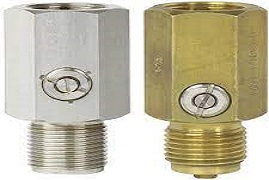What are gauge snubbers and why use them?
In our latest blog, we look at gauge snubbers and why you would need to use them? What are they? A gauge snubber has a small orifice that reduces the rate at which oil reaches your pressure gauge. This device dampens the spikes, resulting in less wear and tear on your gauge. Why…
In our latest blog, we look at gauge snubbers and why you would need to use them?
What are they?
A gauge snubber has a small orifice that reduces the rate at which oil reaches your pressure gauge. This device dampens the spikes, resulting in less wear and tear on your gauge.
Why use them?
Within normal hydraulic system operation, gauges can observe large fluctuations and pressure spikes. For example, every time a cylinder bottoms out, your system is shocked. Over time, this constant hammering results in a loss of gauge accuracy and eventually leads to failure. Because of the potential for inaccuracy and failures associated with these system shocks, we recommend that you either use a gauge snubber or isolate the gauge altogether when it is not being viewed for monitoring.
The gauge snubber consists of a small pressure vessel (approximately 3 cc. in volume) in conjunction with a 12″ length of small bore (.010″ ID) capillary. The pressure enters the small vessel volume and gauge through the capillary and is trapped momentarily thus “smoothing” out the pressure pulse. A stainless steel filter (20 micron) is included at the entrance of the capillary to prevent dirt or foreign objects from clogging the small bore of the capillary.
The gauge snubber concept has proven to be superior to using a valve having an extremely small orifice, or a close fitting pin in a cylinder, due to clogging or instability. While the bore of .010″ ID may appear be quite small, it is actually very large when compared to the orifices required for “snubbing” using other means.
Gauge Snubbers are a great way of protecting gauges from damage, with sudden impact pressure i.e. when full line pressure is introduced to the gauge damage can occur. With the use of the snubber the gauge will be protected.
By isolating the gauge from the system when it’s not being observed, you will increase the life of your gauge immensely, as it is not continually subjected to system spikes. It will only be experiencing spikes when you are actually reading the gauge during short periods of time. To isolate the gauge from the system, install a push-to-read valve, which connects system pressure to the gauge only while the button is held. You can also employ the use of a needle valve, which is fully closed when the gauge is not read, thereby isolating the gauge from the system pressure.
For more information on gauge snubbers, contact our technical team here.


